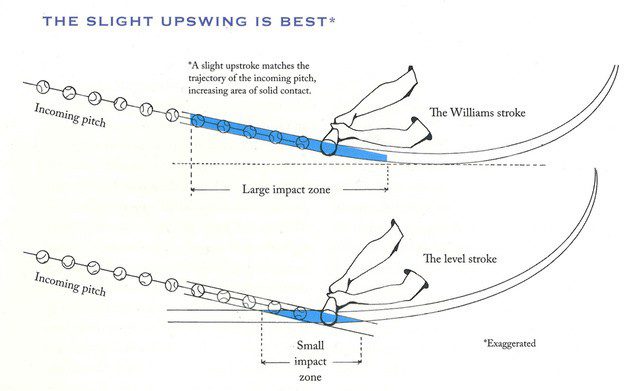Pete Crow-Armstrong’s new stance creates offensive upside for 2022
On first glimpse, something looked different about Pete Crow-Armstrong. No longer did he settle into the left-handed batter’s box with his chest facing the pitcher with his signature “open” stance. No longer did he rest his bat on his shoulder, hands lingering near the letters on jersey. This was a new hitter. He stood up taller in the box, his hands higher and loose near his head as he gathered down into the baseball and smoked a line drive to right field.
“We put in two months of really good work,” Crow-Armstrong said, “And I really like where I’m at right now.”
The Harvard Westlake High School graduate primarily worked with Cubs hitting coordinator Dustin Kelley, assistant hitting coordinator Steven Pollakov, and director of hitting Justin Stone to reengineer his swing. The central reason for his modification revolved around getting Crow-Armstrong to be “on plane” with pitches longer, giving him a larger margin for error.
The concept of getting “on plane” is one discussed most eloquently by Ted Williams in his 1971 book The Science of Hitting. As the image below shows, matching the angle of the incoming pitch for a longer period of time — more blue — creates a greater chance to do damage when not perfectly on time.
The issue Crow-Armstrong had prior to his swing change was actually the inverse of the “level swing” used as a comparison to “The Williams stroke” in the picture above. His old swing took too steep of a path through the ball, creating what Stone calls an “under plane” swing.
“If the ball is at the bottom of the zone and Pete can reach it on time, there’s going to be a good output,” Stone said. “But anything at the top of the zone that he works under, he can’t get to it.”
And in the era of elevated fastballs that possess a bit of a “rise effect” to stay above a hitter’s barrel, the Cubs identified that Crow-Armstrong had issues making productive contact on those elevated pitches.
“One thing that really helped was thinking about keeping my head over the center of my body,” Crow-Armstrong said. “That allows me to get that forward momentum to get more ‘Oomph’… but I also feel like I can adjust and go every which way with the ball.”
The technology and data Cubs coaches and players have access to helped to understand whether they were on the right path with his swing adjustments. Years ago, many decisions in baseball were made with anecdotal evidence — “He should move his hands here because I’ve seen that work with other players” — rather than using data to back up beliefs and challenge outdated thoughts.
For example, Blast bat sensors are now ubiquitous around baseball. On the backfields of the Cubs complex in Mesa, Arizona, you’ll see a medium-sized black box right near the on-deck circle that houses half-dollar-sized sensors. These sensors attach to the knob of a baseball bat with a silicone casing and output numerous metrics valuable to hitters. All of the Cubs top prospects, at one point or another in a given week, will reach down into the box and grab a sensor to wrap around their bat during batting practice or live at-bats.
One of the metrics Blast sensors measures–known as “attack angle”–is the exact point on display in Ted Williams’ graphic above. Attack angle is the vertical angle of the bat as it travels through impact with the baseball (link for more). An attack angle close to 0 is what the “level swing” in the picture showed, while an attack angle more in the realm of 10 degrees is what “The Williams stroke” advocated for, a slight upswing, not the steeper upswing Crow-Armstrong had been utilizing prior to this spring.
This is precisely what Stone, the rest of the Cubs hitting staff, and Crow-Armstrong aimed to correct. And now they had feedback to help them understand and inform themselves about whether one stance worked better than another.
“We have a lot of technology here and they put it to good use, they use it for the right reasons,” Crow-Armstrong said. “[The data] helps you become a little bit more aware of how your body feels in the box.”
A layered approach to player development is the present and future of baseball. Coaches who use their eyes to identify that something needs to change, back up their opinion with data, and communicate effectively with players are arguably the most valuable resource in baseball. And the Cubs have multiple coaches in their organization with all of these traits.
Combine that with innately talented 19-year-olds like Crow-Armstrong and the sky’s the limit.
Learn more about Wicks and the rest of the Cubs prospects working out down in Arizona:



